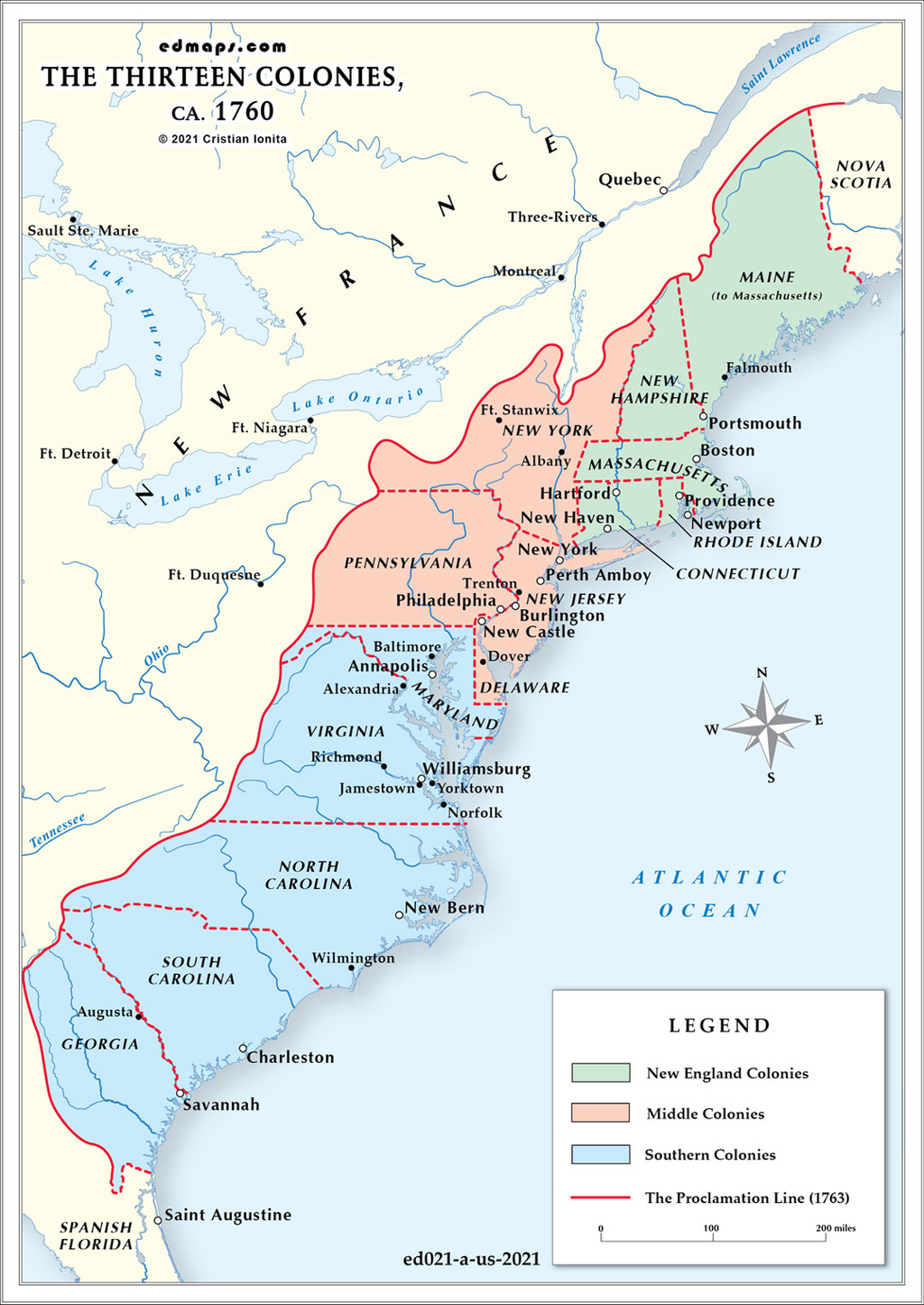

In 1760, the thirteen American colonies operated under a complex territorial and administrative system within the British Empire, during the final phase of the French and Indian War (Seven Years' War).
The thirteen colonies were divided into three administrative types under British rule. Royal colonies included New Hampshire, New York, New Jersey, Virginia, North Carolina, South Carolina, and Georgia, governed by crown-appointed governors accountable to the Board of Trade in London. Proprietary colonies comprised Pennsylvania (Penn family), Delaware (Penn family), and Maryland (Calvert family), where proprietors held governmental authority under royal charters. Charter colonies consisted of Massachusetts, Rhode Island, and Connecticut, enjoying greater self-governance through elected officials under their original corporate charters.
Several colonies possessed overlapping territorial claims extending westward. Virginia's charter granted sea-to-sea rights, theoretically reaching the Pacific Ocean. Massachusetts, Connecticut, North Carolina, South Carolina, and Georgia held similar western claims. These competing assertions created ongoing boundary disputes, particularly between Pennsylvania and Virginia over the Ohio Valley, and between New York and New Hampshire over Vermont territory.
In 1760, British and colonial forces were concluding their conquest of New France. The war had demonstrated colonial military capabilities while revealing administrative challenges in coordinating thirteen separate colonial governments. British control of strategic locations like Fort Duquesne (renamed Fort Pitt) was opening western territories for potential expansion.
Despite official British policy discouraging western settlement to avoid Native American conflicts, colonial population pressure was driving expansion. Virginia planters, Pennsylvania traders, and New England land speculators were increasingly interested in trans-Appalachian territories. The Ohio Company of Virginia and other land speculation ventures were already planning western settlements.
Managing thirteen distinct colonial governments with different legal systems, currencies, and local interests presented ongoing challenges for British imperial administration, foreshadowing future tensions over territorial control and governance.

Lorem ipsum dolor sit amet, consectetuer adipiscing elit. Aenean commodo ligula eget dolor. Lorem ipsum dolor sit amet.

Lorem ipsum dolor sit amet, consectetuer adipiscing elit. Aenean commodo ligula eget dolor. Lorem ipsum dolor sit amet.

Lorem ipsum dolor sit amet, consectetuer adipiscing elit. Aenean commodo ligula eget dolor. Lorem ipsum dolor sit amet.